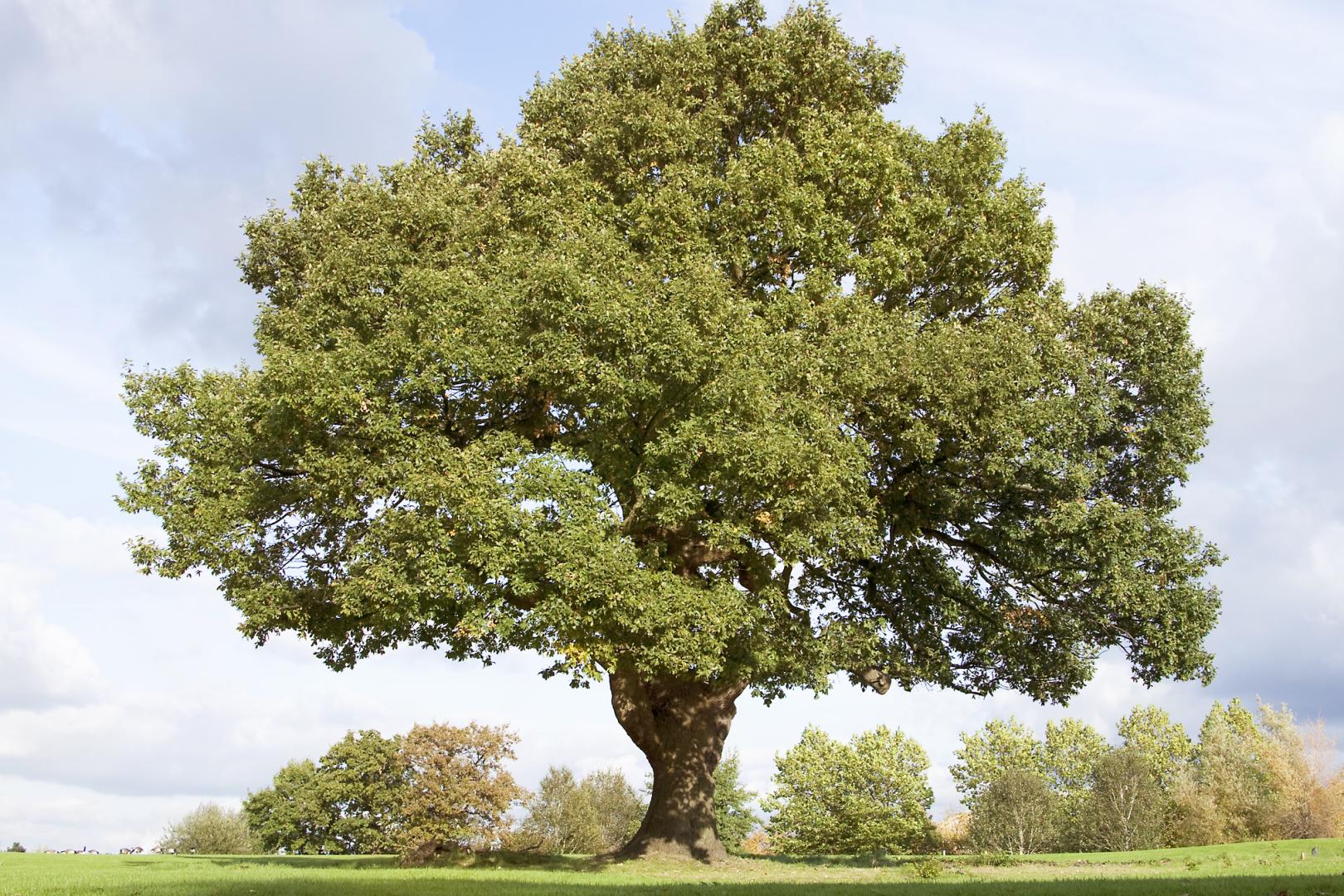About
Oak decline is caused by many factors that are not well understood. This has been reported throughout the Mid-Atlantic Region and is of increasing concern with forest managers and arborists. Of concern is the impact oak decline is having on the County’s reforestation efforts and tree canopy protection. Oaks are a major component of the forest types in this county and are the most valuable in terms of wildlife habitat and water quality.
The goals of this project is to determine where oaks are being lost, identify the causal factors involved, and make an approximate determination of the amount of canopy lost due to their decline. Knowledge of where and to what extent this mortality is occurring will be used to direct management efforts to alleviate the decline of these trees and target potential reforestation when deemed appropriate.
The four most common oaks in Anne Arundel in order of decreasing frequency are White oak (Quercus alba), Chestnut oak (Quercus montana), Northern Red oak (Quercus rubra), and Black oak (Quercus velutina). In Anne Arundel county, other oak species commonly found are Southern red oak (Q. falcata), Scarlet oak (Q. coccinea), Post oak (Q. stellata), Willow oak (Q. phellos), Pin oak (Q. palustris), and Blackjack oak (Q. marilandica). These species of oaks grow in association with other trees to form the majority of the various stands of trees we see in forests within the County. Statewide, oaks account for approximately 28 percent (%) of the total growing stock of trees.
The factors associated with oak decline are a mix of biotic and abiotic factors. These include periods of drought and excessive precipitation, overcrowding, diseases and certain insect pests both introduced and naturally occurring, and proximity to developed areas. These issues can cause initial stress, or when added to the problem, further weaken the trees’ ability to thrive.
Abiotic factors
Weather related
Over the last 10-15 years, Central Maryland has been experiencing periods of drought and excessive precipitation, stressing trees in several ways. Abundant moisture is necessary for a tree to transport the food produced by the leaves throughout the tree, as well as for the roots to uptake nutrients for use in photosynthesis and transpiration. Drought conditions hinder this process and will cause trees to adjust, prompting them to drop leaves and fruits in an effort to cope with moisture deficits and can cause them to go dormant earlier in the season than normal. Conversely, excessive precipitation like what happened the year before last, and last spring, saturates the soil and inhibits root growth. In extreme cases, this will cause roots to die due to the anaerobic (low oxygen) conditions. Wetland adapted trees can survive saturated conditions for longer periods of time than upland species, but even they can be adversely affected during the growing season. Most of the forest trees within the County grow in upland areas.
Cultural/Site Factors
Trees in urban areas are often under some sort of stress. Pollution, soil compaction, poor soils, lack of growing space, etc. put stresses on trees they would not experience in a forest environment. In many, if not most cases, it is impossible to eliminate the problems, making them vulnerable to insect pests and disease. What can be done is to watering trees during dry spells, proper mulching of newly planted trees, and preventing damage to the trunk and branches from equipment during mowing operations. Special attention can be given to the root systems of existing trees by preventing soil compaction from vehicles, equipment, and excess foot traffic. During high rainfall periods, using portable pumps to drain standing water from the area under the drip line of the tree can be very helpful. Urban trees need to be maintained to prolong their survival.
Biotic Factors
Density
Trees, like all plants, need room to grow. In a forest, trees are competing for light, water, and nutrients. As the trees grow and mature, they require more resources to maintain their growth. This occurs around the time of “crown closure” when the trees’ canopies start to close over. When this happens, they become increasingly in competition for the limited resources and will eventually become too crowded. Those trees that have better light availability or a better-established root system will prevail, and those without will drop out of the stand. Genetics also plays a role as some trees within the same species will grow faster than others. This is a normal process and has been documented in numerous research publications and notably documented by Gingrich et. al (Gingrich and Roach, 1968)1. Essentially, as trees grow and become crowded, natural selection will cause some tree to die and drop out of the stand.
Disease and insect pests are also affecting the forests within the County. Invasive insect pests, such as the gypsy moth and emerald ash borer, have inflicted considerable damage to our forests. The gypsy moth caused defoliation and mortality on thousands of acres of trees in the 90’s and 2000’s. Fortunately, the gypsy moth has been inactive recently, likely due to biocontrol’s released years ago that seem to have become more effective. The County is still feeling and seeing the effects of the emerald ash borer invasion from several years ago. Thousands of ash trees were lost, including street trees and numerous trees within the County Parks and natural areas, with more still dying each year. Treatment of high value trees continues for certain trees, notably the pumpkin ash, Fraxinus profunda found in Jug Bay Wetland Sanctuary. Pumpkin ash is a tree uncommon in Anne Arundel County and is only found in the Jug Bay Area.
A new and not very well-known invasive disease known as bacterial leaf scorch (BLS), caused by the organism Xylella fastidiosa, has been quite active recently and likely exacerbated by the periods of wet weather in the spring. This disease attacks not only red oaks, but mulberry, sycamore, elm and several others. BLS is spread by leaf hoppers that infect leaves of trees and shrubs as they feed on sap which then enters the conductive tissues of the tree clogging them and preventing sap flow. This disease is also aggravated by stress factors such as drought and overcrowding. There is no known cure for BLS. Trunk injections of antibiotics are available but only to suppress the symptoms.
These are in addition to insect pests and diseases normally found in the eastern forest such as Armillaria root rot, Hypoxylon canker, two lined chestnut borer, and a host of others. Root diseases are common in the forest and landscapes of Anne Arundel County. Armillaria, or “shoestring rot,” is the most common. Armillaria root rot is caused by several species within the genus with seven found in the North eastern US. Armillaria is a complex disease and is termed a facultative parasite, meaning it can exist as decay organism, but under certain circumstances, become a pathogen. Wounds on the trunk of the tree or damaged roots are the entry way to this disease. The disease is often not detectable until symptoms of crown dieback occur and\or the formation of mushrooms that are light tan in color at the base of the tree, which describes their other common name, “Honey Mushroom”. Other root diseases of note include Ganoderma root rot and Phytophthora root decay. Root diseases are also problematic as they increase the likelihood of tree failure, making the tree hazardous in developed areas.
A canker disease that is prevalent on oaks is Hypoxylon canker. This disease is caused by several species of fungi in the genus Biscogniauxia (formerly Hypoxylon). B. atropunctata or B. mediterranea are usually the species found on Quercus spp. This fungus doesn’t affect healthy trees, but trees weakened by stress are more likely to become infected and usually do not survive.
Native insect pests, unlike introduced species like emerald ash borer, have evolved over the millennia with the native trees. Most have low populations present in any given year. Damage is usually minimal. However, when there are conditions favorable to them, their populations will grow, and they can become serious pests. One such insect is the two lined chestnut borer, Agrilus bilineatus. A bark beetle in the same genus as the emerald ash borer, the two lined chestnut borer will infest weakened oak trees and in sufficient numbers can girdle the branches and main stem causing death. As with most insect pests, bark beetles fluctuate in population based on the available of hosts that they can feed and reproduce on. An abundance of stressed and\or dying oaks gives the two lined chestnut borer ample opportunity to grow their population.
In summary, what is happening in the forests of Anne Arundel County, regardless of the causes, is detrimental to the retention of trees and the tree canopy levels the County is trying to maintain. Identifying where this is occurring will provide the data necessary to move forward with reforestation efforts and mitigation.

